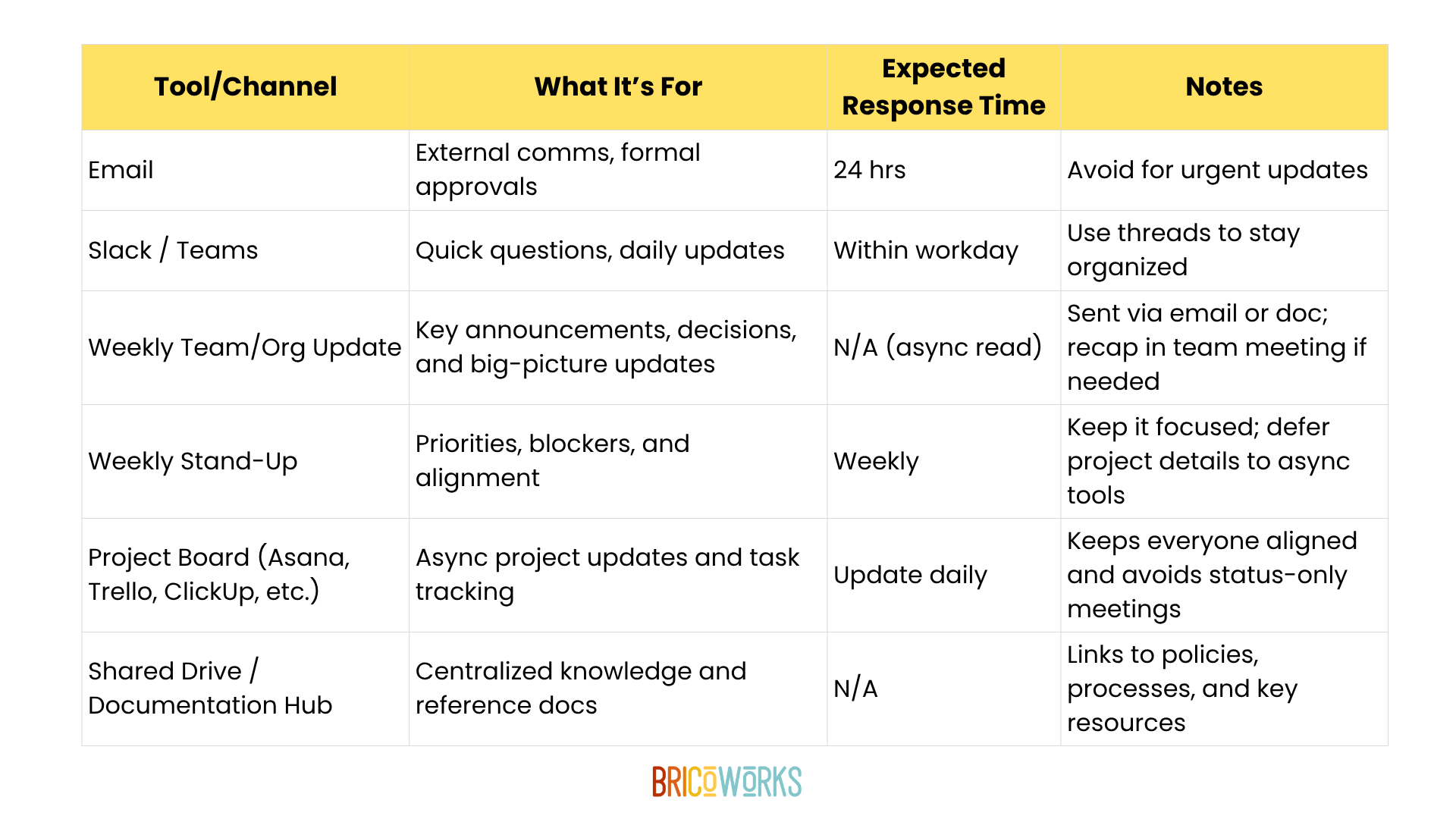Stop the Guessing Game: How a Communication Charter Can Transform Your Team
Ever feel like your team is communicating all the time but still missing each other?
You have emails, chat threads, meeting notes, and a dozen shared docs… and yet someone always says, “Wait, I didn’t know that.” Meanwhile, your calendar is packed with meetings that mostly could have been an email.
It’s not that your team isn’t trying. It’s that without clear agreements on how we communicate, even good communication becomes scattered.
Enter the communication charter—a simple tool to bring clarity, consistency, and a little sanity back to how your team talks and works together.
What Good Internal Communication Looks Like
Strong internal communication isn’t about having more channels or more meetings—it’s about making the essentials clear and consistent. It feels like this:
Clarity: I know where to get updates and what’s expected of me.
Consistency: Important info reaches me in time, the same way each time.
Accessibility: I know which tools we use and how to use them.
Respect: Communication honors boundaries and different work styles.
Two-Way Flow: It’s not just announcements—feedback has a place.
When these are in place, teams stop guessing and start actually collaborating.
Why Your Team Needs a Communication Charter
A communication charter is your team’s shared agreement on how to communicate and how to show up for each other. It answers two simple but game-changing questions:
How do we communicate? (Which channels, and how to use them)
How do we show up for each other? (Team norms and agreements)
Here’s how a charter can transform your team:
Use Your Tools Effectively
Stop the chaos of too many channels. A charter clarifies which tool to use when and how to use it consistently.Spend Less Time Searching for Information
When updates and decisions live in predictable places, you can find what you need quickly.Minimize Interruptions
Reduce pings, duplicate messages, and “just checking in” distractions so you can focus.Overcome Urgency Bias & Uphold Boundaries
Clear expectations for response times and signaling availability mean less stress and more respect for deep work.Foster Inclusion on Hybrid Teams
Documented and intentional communication ensures remote and in-office teammates have equal access to updates.Eliminate Ineffective Meetings
With better async communication, meetings become purposeful conversations instead of status updates.
Template: Team Communication Charter
1. Tools & Channels
Make your invisible systems visible and reduce noise.
2. Team Agreements
Share the Air: Make space for all voices.
Clear is Kind: Be specific with requests, deadlines, and updates.
Take the Lesson, Leave the Story: Respect confidentiality.
Assume Positive Intent: Start from trust.
Practice Curiosity: Ask before assuming.
How to Make It Work
Draft it together—buy-in comes from co-creation.
Start small—pick a few key channels and 3–4 agreements.
Revisit quarterly—teams change, and so should your charter.
Celebrate the wins—fewer “I didn’t know” moments are proof it’s working.
A communication charter doesn’t have to be complicated. It just has to be clear. Once your team knows where and how to communicate, you’ll spend less time chasing information and more time doing the work that actually matters.


